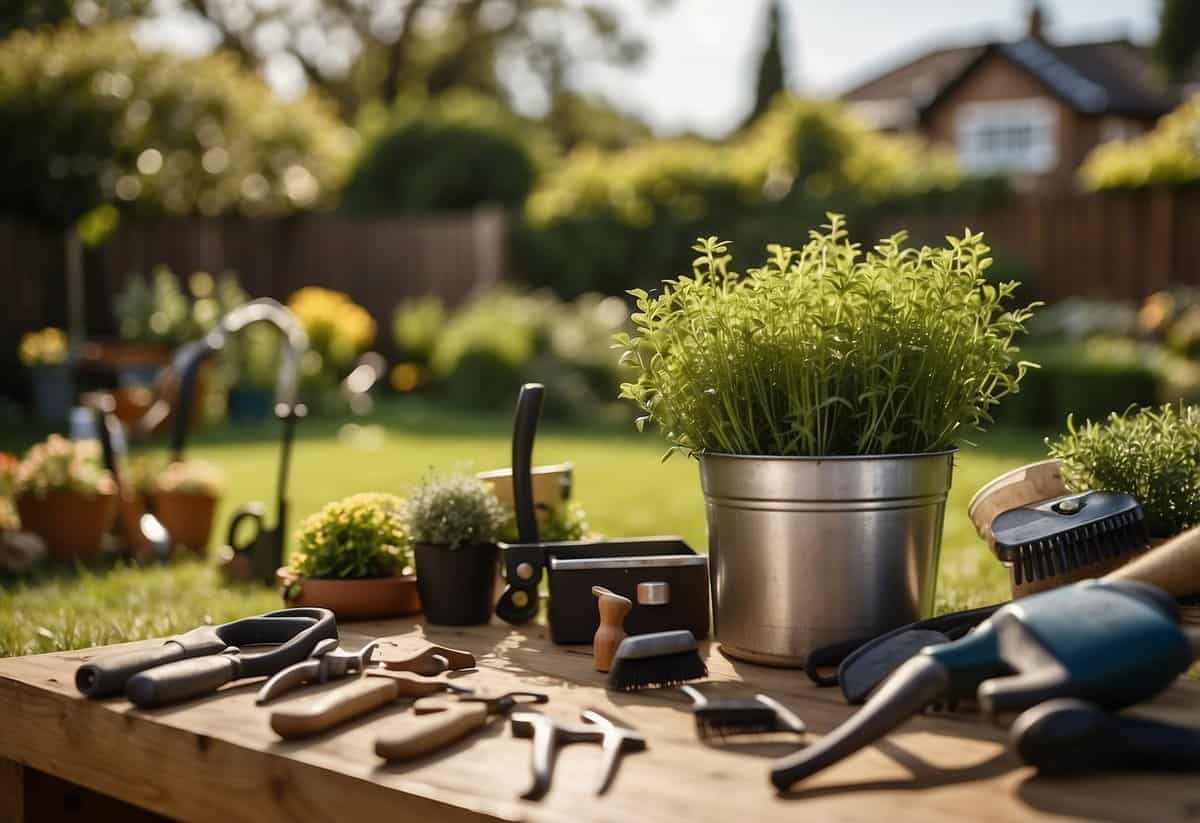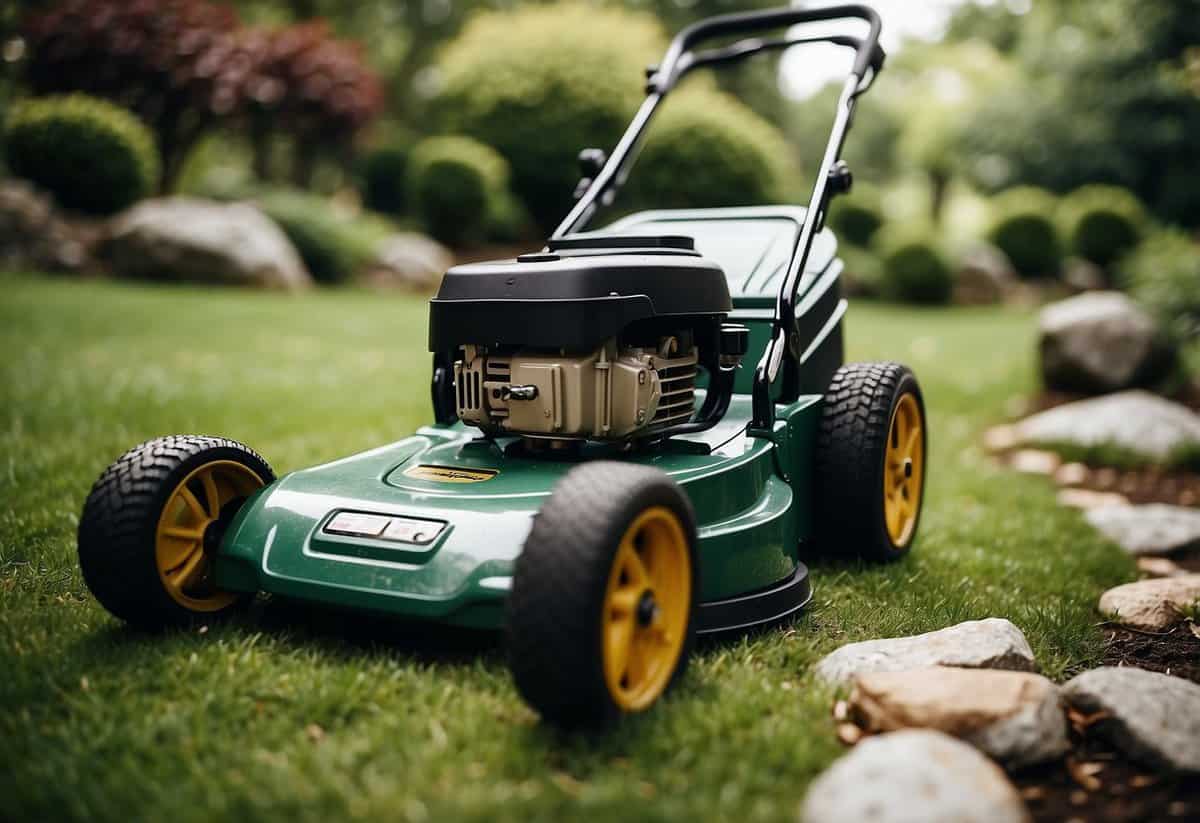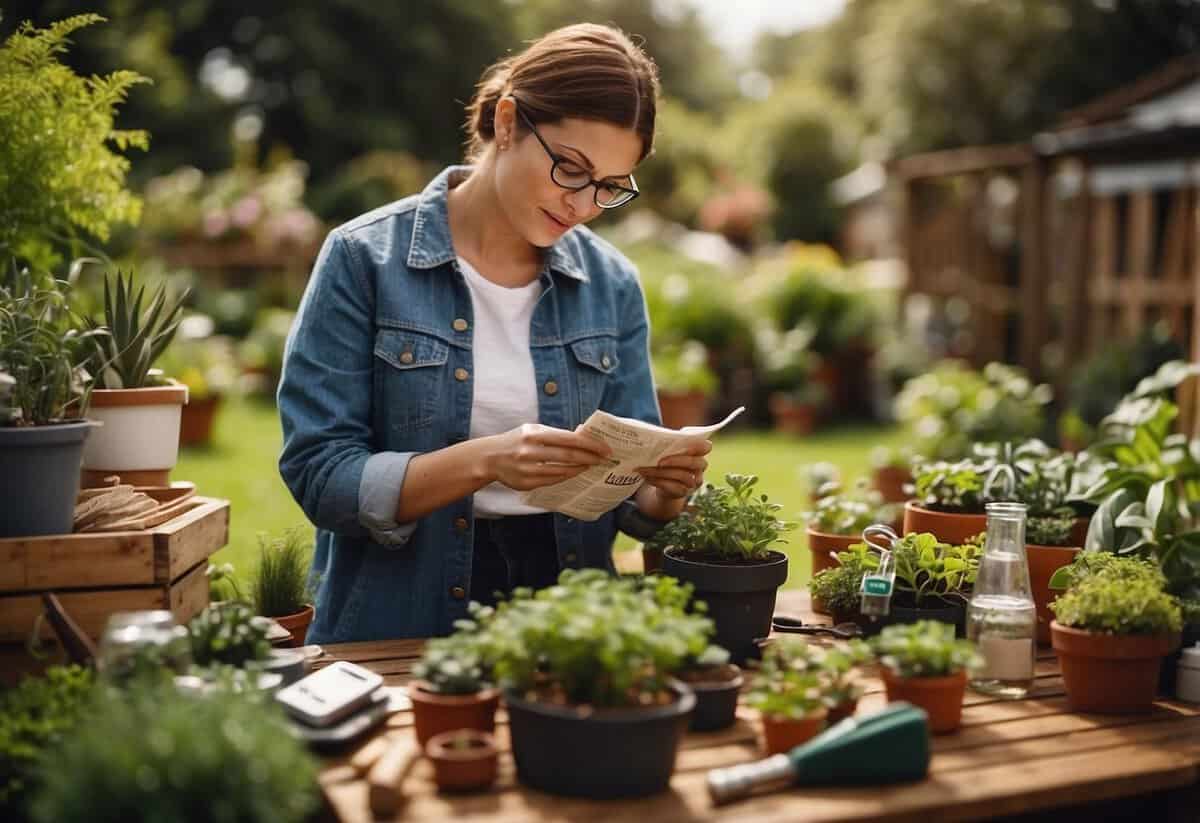Lawn and Garden Safety Tips: Protect Your Family and Pets
Gardening and yard work can be a rewarding way to spend your time, whether you’re planting colorful flowers or maintaining a lush lawn. It’s important to prioritize safety to ensure that your outdoor activities remain enjoyable and accident-free.

By taking simple precautions, you can protect yourself from common injuries and hazards. From using the right equipment to being mindful of your surroundings, these safety tips will help you enjoy your time outdoors while staying safe.
1) Keep tools sharp and in good condition

Keeping your garden tools sharp helps you work more efficiently. Clean your tools before sharpening them. This prevents dirt from dulling the blades.
Use a small file or whetstone to sharpen smaller tools like trowels. Maintain the original bevel for the best results.
Store your tools in a dry place to prevent rust. Regular maintenance saves you time and effort in the long run.
2) Wear Protective Gloves and Glasses

Always wear protective gloves when gardening to shield your hands from cuts, thorns, and soil-borne contaminants. Leather gloves offer great protection against sharp objects and insect bites.
Protective glasses are essential to keep your eyes safe from debris, chemicals, and UV rays. Choose a pair with UV protection to prevent sun damage while you work. Taking these precautions helps you enjoy gardening safely.
3) Store chemicals safely in locked cabinets

Always store lawn and garden chemicals in locked cabinets. This keeps them out of reach of children and pets.
Make sure the cabinet is well ventilated to prevent the buildup of fumes. It should be located in a cool, dry place.
Avoid storing chemicals near food or medical supplies. This minimizes the risk of contamination.
Secure the cabinets to prevent accidental spills or leaks. This helps you keep everyone safe and sound.
4) Check for hidden rocks and debris before mowing

Before you start mowing, walk around your lawn to check for hidden rocks, sticks, and other debris. These items can damage your mower and become dangerous projectiles.
Look for objects that winter might have moved around, like holiday decorations or fallen branches. Remove these to keep your yard safe.
Clearing your lawn beforehand can prevent accidents and protect your mower. It’s a simple step, but it makes a big difference.
5) Read product labels before use

Reading product labels is crucial for safety. Labels provide instructions on how to use products like pesticides and weed killers safely. They also tell you how to store the products properly.
Always check the labels for first aid advice and emergency phone numbers. This can help you act quickly if an accident occurs. For more tips on safe usage, visit Keep Safe: Read the Label First.
6) Stay Hydrated While Working Outside

When you’re working in your garden or yard, it’s easy to forget to drink enough water. Always have a water bottle with you and take small sips often.
The hot sun can dehydrate you quickly. Take breaks in the shade and drink water regularly, even if you don’t feel thirsty. This helps prevent heat exhaustion.
Remember, staying hydrated keeps you feeling energetic and allows you to enjoy your gardening time more safely and comfortably.
7) Use sunscreen to protect your skin

Being outside in your garden is fun, but you need to protect your skin from the sun. Apply a broad-spectrum sunscreen with at least SPF 30. Cover all exposed skin, including your face, neck, and hands.
Reapply sunscreen every two hours, especially if you’re sweating or swimming. Don’t forget areas like the back of your neck and ears.
For extra protection, wear a wide-brimmed hat and sunglasses to shield your face and eyes. Stay safe and enjoy your time in the garden!
8) Keep children and pets away from active work areas

When you’re working in the yard, it’s important to keep children and pets at a safe distance.
Flying debris from mowers and trimmers can cause serious injuries. Make sure kids and animals stay at least 50 feet away from the work zone.
Always use barriers or fences to keep curious little ones and pets out of harm’s way.
9) Wear appropriate footwear with good traction

Wearing the right shoes is important when working in your yard or garden. Good traction helps prevent slips and falls, especially on wet grass or muddy areas.
Shoes with rubber soles can grip surfaces well. Look for options like non-slip shoes or hiking boots.
Avoid sandals or flip-flops as they may not offer enough support or protection. Make sure your footwear is snug and comfortable for long hours of work.
For more information on good shoes for yard work, visit this guide on landscaping footwear.
10) Learn how to properly lift heavy items

When lifting heavy items in your garden, always use your legs, not your back. Bend at your knees and keep your back straight.
Keep the object close to your body as you lift it. This helps you keep better balance and reduces strain on your back.
If something feels too heavy, don’t hesitate to ask for help or use tools like a wheelbarrow. Stay safe and enjoy your gardening!
Understanding Lawn and Garden Safety

Safety in your lawn and garden is essential to preventing injuries and ensuring a pleasant experience. Below, we cover why safety measures matter and identify common risks and hazards you should be aware of.
Importance of Safety Measures
Implementing safety measures helps protect you from accidents and health issues. Working outside can expose you to harmful UV rays, which is why wearing sunscreen and protective clothing is crucial. According to LawnStarter, the time from 10 a.m. to 4 p.m. is particularly hazardous for UV exposure.
Staying hydrated and taking breaks can prevent heat stroke. Using tools properly, like hedge clippers with proper hand and eye protection, ensures safety. Always read and follow tool manuals and instructions to minimize risks.
Common Risks and Hazards
Gardening can involve several risks including back pain, sunburn, and cuts. Wearing long-sleeved shirts, pants, and a wide-brimmed hat reduces sun exposure. Protective gear like UV-blocking sunglasses and gloves is important to avoid insect bites and skin injuries.
Be cautious of pests like ticks, which can transmit diseases. After gardening, thoroughly check your clothing and body for these pests to stay safe. Tools can also pose hazards; keep hedge clippers and trimmers away from children and store them properly to prevent accidents.
Safe Use of Lawn and Garden Tools

Using lawn and garden tools properly helps keep you safe and your garden in great shape. Choosing the right tools, maintaining them well, and operating them safely are key steps.
Choosing the Right Tools
Selecting the right tools makes gardening easier and safer. Weight is important; choose tools that feel comfortable in your hands. Tools that are too heavy can cause strain and muscle fatigue. Pick ergonomic designs to reduce stress on your body.
Look for tools with sharp blades and sturdy handles. Sharp blades cut more efficiently and safely. Dull blades require more force, which can lead to accidents. Handles should be strong and preferably have a non-slip grip to prevent slippage.
Consider the size of the tools. Smaller tools are useful for detailed work, while larger tools are better for bigger tasks. Having a variety allows you to tackle different jobs without overworking specific tools.
Proper Tool Maintenance
Keeping your garden tools in good shape enhances safety and performance. Start by regularly cleaning your tools. Dirt and sap can cause them to become slippery and less effective. Use a wire brush or a cloth to clean off any debris after each use.
Oil moving parts like pruners and shears. This prevents rust and keeps them moving smoothly. Sharpen blades frequently to ensure they stay effective and safe. Dull blades need more effort, which increases the risk of slips and mishaps.
Store tools properly in a dry place. Hanging them up can prevent them from getting damaged or causing accidents. A tool rack or pegboard is a great option. Always check tools for damage before use and repair or replace any broken ones to avoid injury.
Safe Operation Techniques
Using tools correctly is crucial for your safety. Wear protective gear such as gloves, safety glasses, and sturdy shoes to protect against cuts, debris, and falling items. Protecting yourself prevents many common garden injuries.
Always read the manufacturer’s instructions before using a new tool. Understand how it works and any specific safety precautions. Follow proper holding and operating techniques to minimize the strain on your body and reduce the risk of accidents.
When using sharp tools like pruners or saws, cut away from your body to avoid injury. Take regular breaks to rest and stay hydrated, especially on hot days. This helps you stay alert and reduces the risk of accidents from fatigue.







